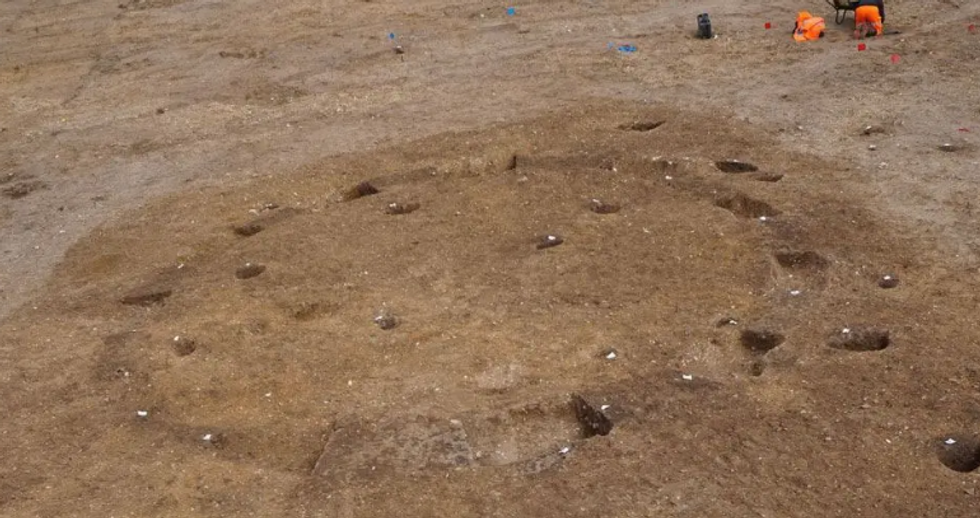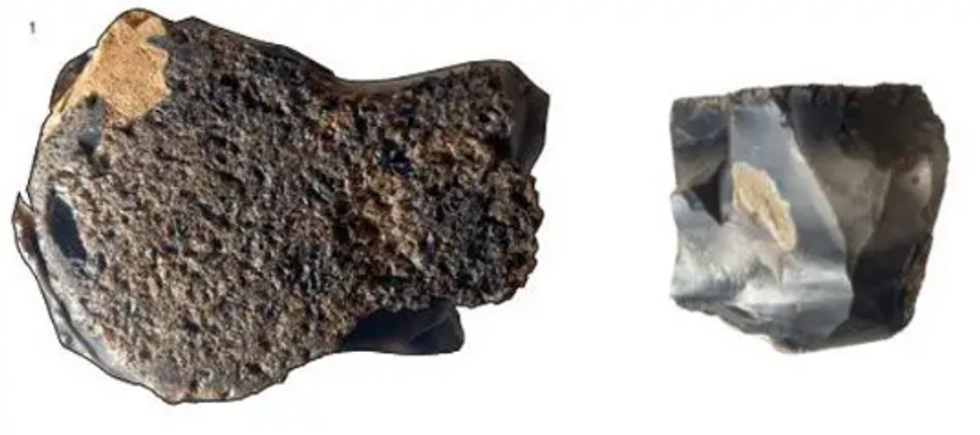MYSTERIOUS human remains found in bog believed to be over 2,000 years old
GB News
The discovery was announced by Suffolk County Council on Wednesday
Don't Miss
Most Read
Trending on GB News
Archaeologists have unearthed a sophisticated Bronze Age settlement in Ipswich dating back 3,000 years, revealing that ancient residents were "not living in squalor".
The discovery was announced by Suffolk County Council on Wednesday.
Chris Thatcher, Oxford Archaeology senior project manager, noted there was "an exciting level of preservation" at the site.
The settlement, which carbon dating shows lasted at least 400 years, was found ahead of road development near Bramford and Sproughton.

The settlement, which carbon dating shows lasted at least 400 years, was found ahead of road development near Bramford and Sproughton
OXFORD ARCHEOLOGY
"This means many generations of people were living within that landscape," Thatcher said.
The archaeological site has yielded remarkable finds including the postholes of two roundhouses and numerous four and six-post structures.
Discoveries also include ceramics dating from circa 1150-800BC, fragmented fired clay weights, and a clay spindle whorl used for yarn spinning.
Evidence of pottery production was found alongside worked flints.
MORE LIKE THIS:
A rare example of a flint quern, used for grinding grain into flour, was among the significant items uncovered.
The site also contained 18 burials that were broadly contemporaneous with the settlement. The burials mark a significant cultural shift in Bronze Age practices, according to experts.
Earlier Bronze Age people typically buried their loved ones in monuments and barrows.
The discovery of a cemetery directly at the settlement site represents a change in tradition during the mid-Bronze Age period.
"Culture is always changing and shifting within any period, but what we're seeing here is a good example of this shift in the mid-Bronze Age," explained Thatcher.
The site provides researchers with a rare opportunity to study these evolving cultural practices in detail.
The farm relied upon a mixed agricultural economy, producing wheat and barley while breeding cattle and raising sheep, goats and pigs.
"These residents lived in large single storey homes of about 9m in diameter which could fit a family," said Thatcher.

A rare example of a flint quern, used for grinding grain into flour, was among the significant items uncovered
OXFORD ARCHEOLOGY
He emphasised that the Bronze Age inhabitants enjoyed relatively comfortable living conditions rather than primitive circumstances.
"People are very sophisticated, we have always wanted to have made lives better, been inquisitive and traded - we want nice things - and we do that through innovation," Thatcher noted.
The significance of the site lies in its ability to provide concrete evidence of everyday Bronze Age life.
"The further back in pre-history, the harder it is to find everyday evidence of how people lived," Thatcher explained, "This site offers really tangible evidence, we can see where people lived, where they worked and where they buried family members."
The land where the settlement was discovered is currently boxed in by a housing estate, an industrial estate, a railway line and the A14.
The excavation took place before the development of Europa Way, a new road in Ipswich.







